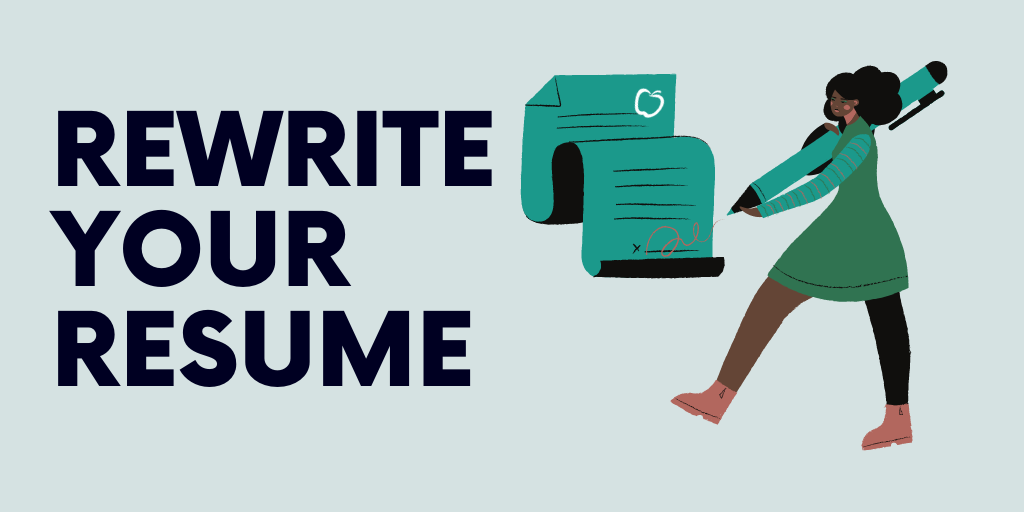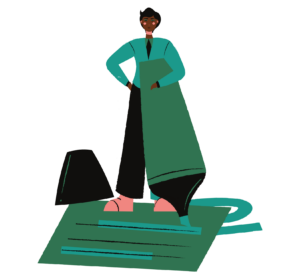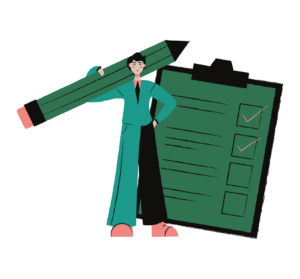
Your resume is the first thing a potential employer will see, making it vital to landing an initial call, interview, and, eventually, your dream job. People involved in hiring often look at dozens – sometimes hundreds! – of resumes to find the perfect applicants, which makes carefully reading and reviewing each resume one of the most critical parts of hiring. That’s a responsibility we take very seriously at CalWest – members of our candidate team review every teacher, administrator, and head-of-school resume multiple times before sending them to school leaders to review. The more we see, the more we know that each resume is as unique as the person it represents. However, there are approaches to resume writing that can put you ahead of the crowd.
Whether you’re early in your teaching career or looking to revise a multi-page administrative CV, following a process can make resume review less painful. Here are six essential steps to writing a resume that reflects your authentic self and helps recruiters and hiring managers know exactly where you’ll fit best.
If you’re ready to overhaul your resume, grab a coffee, a snack, and your computer and let’s get started!

Step 1: Start with substance over style
It’s easy to spend time hunting for the perfect template without considering what it will actually say. This will put you at risk of having a nice-looking resume that doesn’t accurately speak to the professional experience of the person behind it. We suggest starting with a bare-bones resume that will give your document structure and help you focus on communicating who you are, how you work, and why you’re the best candidate for the job.
Starting with a blank document, create a no-frills, reverse-chronological outline of each role you’ve held, your education, and any professional development or continuing education you’ve completed. You can skip anything that isn’t relevant to your education job search unless the position is critical in explaining a specific skill set or gap in employment.
Next, write down every possible skill and core competency that you possess as an educator – seriously! Include everything including tech skills, interpersonal skills, and pedagogical expertise. The more you list now, the more you’ll be able to highlight across your resume. Reminder: Don’t worry about how it looks yet! Instead, focus on making sure you’ve listed all the relevant titles, dates, and skills.
Step 2: Detail your accomplishments, competencies, and outcomes

When reviewing candidate resumes, search firms, and independent school hiring committees look for information about your accomplishments, competencies, and outcomes. In the second phase of resume writing, you should dig into why you were successful in these roles and how you will bring this experience into your next job.
Your goal will be to write a few sentences about each role. In this task, go beyond outlining your responsibilities, and focus on how you did your job. As you go through each job, ask yourself these questions…
- What am I most proud of when I think about this position?
- How did my work impact the school at a cultural level?
- In what ways did I grow in this role, and how did I show that growth?
Be sure to reference the list of skills you’ve jotted down and think of ways to demonstrate these skills. Make sure to include any significant professional accomplishments, awards, presentations, and publications in these sentences, too.
Your document should be starting to fill up at this point, even if it’s not very nice looking.
Step 3: Focus in on your story 
A great resume isn’t just a list of jobs and responsibilities, but the story of your career to date. Consider the story you’ll be telling and evaluate what you’ve written so far. As you review and outline your experience, keep in mind that hiring managers are interested in how your unique career path got you where you are today.
Since your resume is the story of your career, you should focus on telling the story in the way that best demonstrates how you’ll be a perfect fit for the job. If using a functional resume that groups your experiences by type helps demonstrate your aptitude as an educator or administrator, go for it! Or, if you’re looking to transition from public to private and independent schools, consider focusing less on public school-specific outcomes such as test scores and instead concentrate on sharing more about how your teaching experience in a public school will inform your work in a new environment.
Step 4: Write your professional summary 
The professional summary is typically located at the top of a resume, but we encourage you to write it after you’ve thoroughly outlined your experiences, competencies, and outcomes.
The professional summary should be two to three sentences that serve as an elevator pitch that can stand in place of a longer, more detailed cover letter. Many job seekers like to include their years of experience, current occupation or field, and a few words that describe their work ethic, personality, and a list of key skills.
At this point, you should have a very robust outline of your career and the skills you bring to the table. You should take some time to find job descriptions for positions you’re interested in pursuing. Use these job descriptions as a guide for what professional skills are most important to employers. In your bare-bones document, highlight ten or so skills and experiences that align with what employers look for most often.
We suggest reviewing this post from The Balance for a more extensive walk-through of writing an excellent professional summary.
Step 5: Find your perfect template 
You’ve put all your resume content together, possibly more than you can fit in a conventional resume. This is a great problem to have because editing can often be less painful than writing! Save your bare-bones resume document somewhere that’s easy to access and make a copy to use for populating your template so you won’t accidentally delete or save over something you might want to use in the future.
Our favorite resume templates start with a professional summary, followed by a skills section, and then your education and experience.
If you already have a template or format you like, hooray! Once you’ve verified that your resume will avoid the pitfalls we mention next, you’ll be ready to put it all together.
Some things to consider when selecting a resume template…
- Readability: The resumes that move more quickly through the process are usually clearly written, use bullet points, and have a minimum font size of 12pt. Try to pick a template that allows substantial space for your summary and job descriptions versus a more minimal template with lots of design elements. Although highly-designed resumes are appreciated for their aesthetics,they can also be distracting. Most resume reviewers will do a quick read of your summary and bullet points before digging into the details of your work.
- White space: Because your resume is key to making a lasting first impression, it can be tempting to pack every page of your resume with information. You may find that many templates have a lot of seemingly unused space that could contain even more info about you and your career, but this white space helps resume reviewers read and understand your resume without getting overwhelmed. If you can’t fit every detail you want on your selected template, consider adding an additional page or reviewing your targeted roles and eliminating details that aren’t strongly connected to the jobs you want.
- Potential for bias: It’s increasingly common for resume templates to include a headshot, and we’ll admit that we love seeing your smiling face on such an important document. As a rule, the CalWest team discourages using a photo in your resume because it can trigger implicit bias from reviewers. This trend is one of the many reasons the CalWest team has created our own internal process for minimizing how bias influences our resume review. We encourage you to consider whether including your image could bias your candidacy and let that thinking guide how you select your resume template.
- Readability: The resumes that move more quickly through the process are usually clearly written, use bullet points, and have a minimum font size of 12pt. Try to pick a template that allows substantial space for your summary and job descriptions versus a more minimal template with lots of design elements. Although highly-designed resumes are appreciated for their aesthetics,they can also be distracting. Most resume reviewers will do a quick read of your summary and bullet points before digging into the details of your work.
There are many services for finding free or inexpensive resume templates and online resume builders. Here are a few of our favorites: Resume Genius | The Balance Careers | Resume Lab
 Step 6: Put it all together and PDF
Step 6: Put it all together and PDF
Congratulations, you’ve reached the final step! With your template and minimal resume in hand, it’s time to bring your best resume yet into being. Go through each section copying and pasting content from your bare-bones resume. To avoid formatting mishaps in Microsoft Word, after copying text, you can right-click in the document and choose “Paste and Match Style” or “Keep Destination Formatting.”
Make any additional tweaks to language and formatting, and be sure to save often to avoid losing all the progress you’ve made. When you’re done, read the resume in full and send a copy to a friend who has an eye for detail. Once you’ve made your final changes to any spelling, grammar, or formatting errors, save your resume as a PDF and start sharing it with the world!
Become a CalWest Candidate
CalWest uses equity and inclusion-focused practices to identify and place educators at the best independent, private, and charter schools on the West Coast.
Apply Now! →
